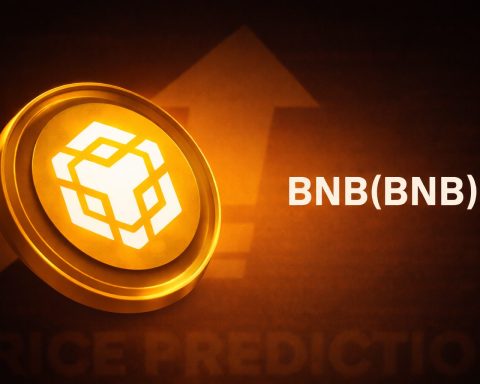- Trump’s shock tariff ultimatum: On Oct 10, President Trump vowed a “massive increase” (up to 100%) in duties on all Chinese imports [1]. The sudden post on Truth Social blindsided investors, triggering a global selloff.
- Historic stock decline: U.S. markets plunged. The S&P 500 fell 2.7% to about 6,552 (its biggest one-day drop since April) and the Nasdaq plunged 3.6% to 22,204 [2]. The Dow lost nearly 900 points to 45,479 [3]. In total roughly $2 trillion in stock market value evaporated in hours [4]. European and Asian bourses also tumbled – the STOXX 600 slid 1.2%, FTSE 100 dropped 0.9%, Germany’s DAX and France’s CAC 40 fell ~1.5% [5]. High-flying tech shares were hit hardest (Nasdaq-100 -3.5%), with Nvidia, AMD, Apple and Tesla all down several percent [6].
- China’s hard line: Beijing immediately warned it would “resolutely take corresponding measures” if the U.S. pressed ahead [7]. China’s Commerce Ministry urged talks instead of threats, saying “threatening high tariffs at every turn is not the right way to engage” and reaffirming “we do not want [a tariff war], but we are not afraid of one” [8] [9]. The spat came after China announced tougher export controls on 12 critical rare-earth metals (vital for tech and defense) [10] – a move analysts say gives Beijing new leverage. CFR’s Jon Hillman observes “the Chinese saw the leverage they had earlier this year with export controls… so it’s not surprising they would… stack the deck in their favor” [11]. Rare-earth expert Neha Mukherjee warns this is driving a “structural bifurcation” of global supply chains, as China localizes critical industries and the West rushes to build its own sources [12].
- Safe havens and commodities: Fleeing risk, investors bid up traditional safe assets. U.S. 10-year Treasury yields fell (to ~4.05%), while gold spiked toward record highs around $4,000/oz [13]. Oil prices collapsed ~4% to multi-month lows amid worries of a global slowdown [14]. The Cboe Volatility Index (VIX) surged to its highest level since June [15]. By contrast, rare-earth mining stocks soared on the China news (e.g. U.S. Rare Earth +19%, MP Materials +12% [16]).
- Crypto bloodbath: Digital assets plunged even more sharply. Bitcoin dropped under $110,000, and Ethereum and many altcoins fell over 20% in hours [17] [18]. Crypto-forensics expert Joshua Duckett reports that heavily leveraged traders were forced to liquidate billions of dollars of positions, sparking a cascade of sell orders [19] [20]. One analyst notes “the crypto market reacted in a more extreme way than the stock market because it’s 24/7” trading [21]. The crash erased billions from crypto market cap, though Duckett and others see “signs of stabilization” – “we’re kind of in a rebound-to-stable position,” he said, “Tomorrow is a new day” [22].
- Analyst outlook: Most experts stress that this was a sudden shock, not an underlying financial crisis. Many note that the S&P 500 was still well above last year’s lows, and they see buying opportunities amid panic-selling. “After a five-month market ‘melt-up,’ some cooling off is possible,” say LPL Financial strategists – but any pullback should be viewed cautiously as a “potential opportunity to buy,” given seasonally strong year-end trends [23]. Historical patterns suggest tech stocks often rebound from October dips. JPMorgan economists, for example, previously forecast that a moderate Q4 rally could resume once uncertainty recedes. However, analysts warn volatility may persist: geopolitical risks and earnings updates will drive swings in the coming weeks.
Trade War 2.0 Sparks Market Chaos
On Friday Oct. 10 markets “melted up” for the week – then suddenly crashed after Trump’s announcement. Traders described a classic “sell first, ask questions later” reaction [24]. The president’s unheralded post on Truth Social threatened to hike tariffs on all Chinese imports (reportedly to 100% starting Nov. 1) and rescind a planned Xi-Trump meeting. Within hours, U.S. indices erased recent gains: the tech-heavy Nasdaq saw its worst day since April, and even defensive sectors barely held ground [25]. In dollar terms, Wall Street lost on the order of $2 trillion in market capitalization [26]. Analysts note this was the steepest one-day drop since the April flash crash, driven not by an earnings miss but by geopolitical flare-up. “This was not due to a banking panic or financial meltdown, but a 30-word tariff ultimatum,” said one strategist.
Investors have been jittery for weeks: September delivered four straight monthly gains, fueled by AI hype and expectations of Fed rate cuts. But none expected so sudden an escalation. A Reuters analysis captured the mood: “markets were expecting better news from trade talks, so the tweet came out of nowhere and immediately triggered selling [27].” Once China’s rare-earth embargo was announced Oct. 9, traders already saw trouble ahead. When Trump then canceled the Xi summit and vowed massive tariffs, the risk-off stampede accelerated.
China’s Fiery Response
Beijing’s reaction was swift. The Commerce Ministry called the tariff threats “not the right way” to resolve disputes and accused the U.S. of “double standards” [28]. It urged Washington to honor past commitments, warning that if the U.S. “persists in acting unilaterally, China will take corresponding measures to safeguard its legitimate rights” [29]. In effect, China is daring the U.S. to back down from the standoff, repeatedly noting “we do not want [a tariff war], but we are not afraid of one” [30]. Chinese media and officials made clear they view the rare-earth controls as legitimate retaliation and leverage.
Economists and analysts see this as a dangerous escalation. Both sides now hold “levers” – the U.S. wields tariffs and export controls, while China dominates critical minerals. Nazak Nikakhtar (ex-U.S. Commerce Dept) told Bloomberg that China is using these levers “to substantially weaken our manufacturing sector including semiconductors, AI and defense articles.” Jon Hillman of the Council on Foreign Relations agrees that Beijing is capitalizing on its rare-earth edge: “The Chinese saw the leverage they had… so it’s not surprising they would… try to stack the deck in their favor” [31]. Indeed, China’s moves hit just weeks before an expected Trump–Xi meeting at the APEC summit – an attempt to gain bargaining power. The two sides are again accusing each other of breaking earlier “truces,” and global trade talks hang in the balance.
Market Winners and Losers
As the turmoil hit, sectors split sharply. Tech and growth stocks were pummeled: chipmakers and high-fliers plunged on fears of disrupted supply chains. Nvidia (NVDA) was off about 5%, AMD down ~8%, Google/Alphabet dipped ~4% – all on the prospect of higher costs and tighter controls on cutting-edge chips. Chinese tech giants listed in the U.S. (Alibaba, Baidu) each fell over 5% [32]. Auto and industrial stocks also slid, since auto-makers import Chinese parts. By contrast, defensive sectors and commodities seen as hedges held up. Gold’s spike reflects “haven” buying; oil’s fall signals growth worries.
On the flipside, miners and rare-metal plays soared. Stocks like U.S. Rare Earth (USAR) jumped ~19% and MP Materials ~12% [33] on the idea that China’s curbs benefit Western suppliers. Even some Asian markets saw pockets of strength: South Korea’s KOSPI actually rallied ~1.7% (it was closed on Oct.10 and played catch-up on earlier gains) [34], partly on exporters and chip stocks. Japan’s Nikkei fell only ~1%, buffered by yen weakness. Still, the overwhelming trend was risk-off: European STOXX600 dropped 1.2% [35], Hong Kong’s Hang Seng fell ~1.7% to ~26,290 (its fifth straight decline) [36], and China’s own CSI 300 slid ~2% on combined trade and tech crackdown fears [37].
Crypto: Bloodbath and Rebound Signals
Cryptocurrencies – which often amplify financial panics – plunged dramatically. Bitcoin fell below $110,000, and Ethereum, Solana and other big altcoins plunged ~20–30% in mere hours [38] [39]. Crypto forensic expert Joshua Duckett of CoinDesk/CryptoQuant reports over $7 billion of crypto long positions were liquidated on Oct. 10 alone, as leveraged traders were caught off guard [40] [41]. He notes that in crypto “the total in terms of leveraged trading… is in the billions” [42], meaning many traders risk far more than they actually put in. Duckett cautioned that crypto’s 24/7 trading makes it hyper-volatile: “most people don’t invest more than they can lose, but in crypto… in terms of leveraged trading, it’s in the billions” [43].
Fox Business reports Coinbase (a major crypto exchange) lost about half its market cap in the past week amid the turmoil [44]. The crash was directly tied to the tariff news: “the sudden collapse followed the U.S. government’s announcement of new tariffs on Chinese tech imports, a move that rattled investors” [45]. In the aftermath, experts say panic may be peaking. Terry Duffy (CME Group CEO) called the selloff “frightening” in its ferocity [46]. But Duckett sees a tentative turn: after a day of extreme volatility, he reports “signs of stabilization… we’re kind of in a rebound-to-stable position. Tomorrow is a new day” [47]. In short, crypto remains jagged, but outright capitulation may be subsiding.
Expert Take and Market Outlook
Most strategists emphasize that while the selloff was severe, it was triggered by a policy shock – not by corporate fundamentals or underlying credit problems. Moody’s and other rating agencies have not signaled a credit crisis, and company earnings remain solid. Many believe this bout of volatility will pass once clarity emerges from Washington and Beijing. Indeed, history offers some comfort: after previous tariff scares (and even after the 2018–19 trade war peaks), equities eventually regrouped when concrete deals or policy shifts arrived.
Analysts also point out positive seasonal factors. Historically, the S&P and Nasdaq tend to rally from November through March, often rebounding after October pullbacks. Research quoted by TS2 Tech notes that November–March is “consistently the strongest stretch for tech stocks” [48]. LPL Financial strategists explicitly advise viewing this dip as an opportunity: “after a 5-month market ‘melt-up,’ some cooling off or volatility is possible… but [we] would consider [any dip] a potential opportunity to buy,” especially with a strong seasonal fourth quarter ahead [49]. In other words, many fund managers are not panicking – they see this as a moment to buy beaten-down high-quality names, anticipating a cyclical rebound.
Looking ahead, key dates loom. Federal Reserve minutes on Oct. 30 and a Fed decision in late October may shift interest-rate expectations (which in turn affect stocks). Markets will also watch for any sign of a Trump–Xi meeting still happening at the upcoming G20/Asia summit. A deal could spark a rapid rally; conversely, further tariff escalation could deepen the slide. As SocGen strategists noted, “as soon as [Trump] took a more conciliatory tone or schedule was back on track… markets [rallied] immediately” (they said about prior incidents). For now, investors are bracing for more turbulence. But many experts echo TS2: despite the one-day bloodbath, the “core fundamentals” (corporate profits, consumer spending) remain sound, so this could turn out to be a temporary shock in an otherwise resilient bull market.
Sources: Reports from CNBC, CNN, Times of India, Fox Business, Reuters and others [50] [51] [52] [53] (detailed links above) provided data and expert commentary. Industry analysts and TS2.Tech articles were also consulted for insights on rare earths, market seasonality, and sector impacts [54] [55]. All stock values and indices refer to market data as of Oct. 10–11, 2025.
References
1. ts2.tech, 2. ts2.tech, 3. ts2.tech, 4. ts2.tech, 5. ts2.tech, 6. ts2.tech, 7. timesofindia.indiatimes.com, 8. timesofindia.indiatimes.com, 9. www.wral.com, 10. ts2.tech, 11. timesofindia.indiatimes.com, 12. ts2.tech, 13. ts2.tech, 14. ts2.tech, 15. ts2.tech, 16. ts2.tech, 17. www.foxbusiness.com, 18. www.foxbusiness.com, 19. www.foxbusiness.com, 20. www.foxbusiness.com, 21. www.foxbusiness.com, 22. www.foxbusiness.com, 23. ts2.tech, 24. ts2.tech, 25. ts2.tech, 26. ts2.tech, 27. ts2.tech, 28. timesofindia.indiatimes.com, 29. timesofindia.indiatimes.com, 30. timesofindia.indiatimes.com, 31. timesofindia.indiatimes.com, 32. ts2.tech, 33. ts2.tech, 34. ts2.tech, 35. ts2.tech, 36. ts2.tech, 37. ts2.tech, 38. ts2.tech, 39. www.foxbusiness.com, 40. ts2.tech, 41. www.foxbusiness.com, 42. www.foxbusiness.com, 43. www.foxbusiness.com, 44. www.foxbusiness.com, 45. www.foxbusiness.com, 46. www.foxbusiness.com, 47. www.foxbusiness.com, 48. ts2.tech, 49. ts2.tech, 50. ts2.tech, 51. timesofindia.indiatimes.com, 52. www.foxbusiness.com, 53. www.foxbusiness.com, 54. ts2.tech, 55. ts2.tech







